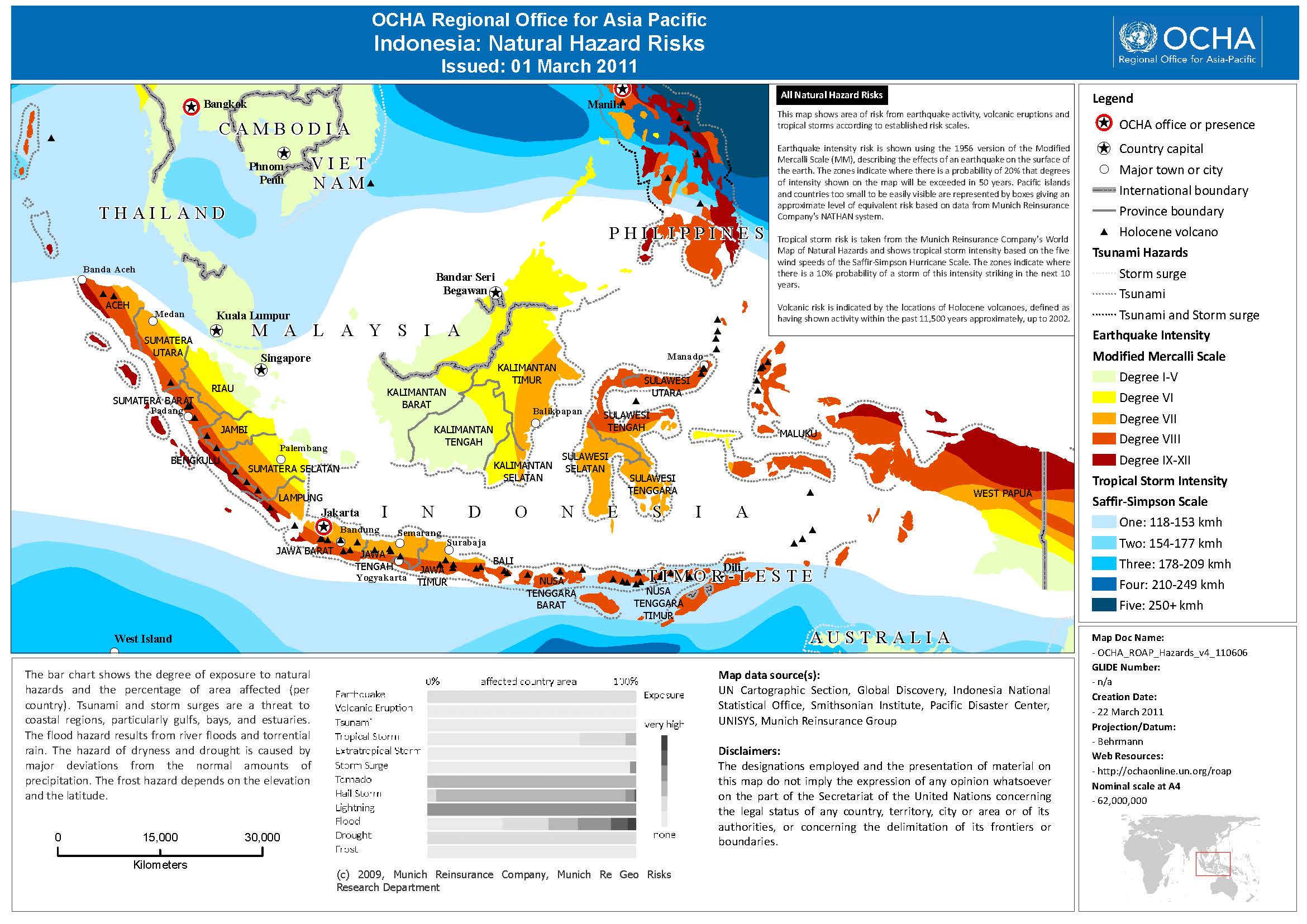Disaster Risks In Indonesia

Indonesia is situated on one of the most volatile fault lines in the world, and suffers regular incidences of earthquakes, tsunamis and volcanic activity. These phenomena also trigger other disasters such as mudslides, landslides and flooding. Indonesia's physical attributes result in a very high level of vulnerability for substantial number of Indonesians.
Many communities across Indonesia are living in a constant state of risk, and these communities have little understanding about disaster risk reduction (DRR).
Furthermore, government efforts in disaster planning since the devastating tsunami of 2004 have focused mainly on emergency response management. However, little has been done to encourage community involvement or any concerted efforts towards disaster mitigation.
The risk of earthquakes and tsunamis in Bali is very real. Recent increases in the frequency of seismic activity along the subduction zone where the Eurasian and Australasian tectonic plates meet has resulted in a series of earthquakes and related tsunami affects throughout Sumatra and Java. The government of Indonesia believes that Bali is extremely vulnerable and has since organized a national tsunami drill in the village of Sanur on December 26th, 2006.
Risk and vulnerability analysis carried out by the Meteorology and Geophysics Agency (BMG), has identified the coastal areas of Sanur, located in the island's southeast corner, as a high-risk area for tsunamis. There is an urgent need to provide community-based disaster preparedness training to these areas to mobilize community contingency strategies.
This can be achieved through the formation of community disaster management groups, evacuation plans and disaster management plans. There is also a need to reduce the rising fear and tension within Bali's coastal communities by providing simple and accurate information that corrects some of the misinformation and myths surrounding natural disasters.
Source: UNOCHA - Click here to download PDF file.
CLICK HERE TO SEE IDEP FILMS RELATED TO THIS ASPECT OF OUR WORK IN INDONESIA
Click here to help us reduce the risk of disasters.
|






